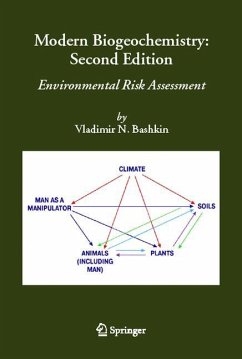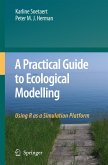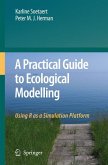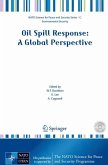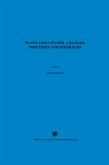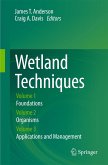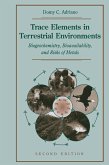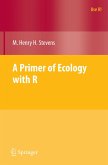At present, quantitative ecological risk assessment is widely used in different contexts, however very often without an understanding of the natural mechanisms that drive the processes of environmental and human risk. Its application is often accompanied by high uncertainty about risk values. On the other hand, the sustainability of modern technoecosystems is known because of their natural biogeochemical cycling that has been transformed to various extents by anthropogenic studies. Accordingly our understanding of the principal mechanisms that drive the biogeochemical food webs allows us to present a quantitative ecological risk assessment and to propose technological solutions for management of various ERA enterprises. It also enables us to devise a powerful mechanism for ecological insurance, to assign responsibilities and protect rights while managing the control of damage from natural and anthropogenic accidents and catastrophes.
"This second edition of Modern Biogeochemistry has been substantially updated and placed within an interdisciplinary approach to Environmental Risk Assessment. This textbook is a very valuable source of case studies from Russia, Asia and the former Soviet Union.
The carefully chosen examples, such as urban, oil, metals, and agriculture, give a good sense of how the biogeochemical approach is applied in different circumstances.
I strongly recommend this work to researchers in biogeochemistry and related fields because it provides insight into the perspective and approaches of the separate historical development of biogeochemistry in the former Soviet Union, as well as a modern approach to quantitative Environmental Risk Assessment based on biogeochemistry."
Sandy Tartowski, Research Scientist, USDA-ARS, Jornada Experimental Range, NMSU, Las Cruces, NM
The carefully chosen examples, such as urban, oil, metals, and agriculture, give a good sense of how the biogeochemical approach is applied in different circumstances.
I strongly recommend this work to researchers in biogeochemistry and related fields because it provides insight into the perspective and approaches of the separate historical development of biogeochemistry in the former Soviet Union, as well as a modern approach to quantitative Environmental Risk Assessment based on biogeochemistry."
Sandy Tartowski, Research Scientist, USDA-ARS, Jornada Experimental Range, NMSU, Las Cruces, NM
This second edition of Modern Biogeochemistry has been substantially updated and placed within an interdisciplinary approach to Environmental Risk Assessment. This textbook is a very valuable source of case studies from Russia, Asia and the former Soviet Union.
The carefully chosen examples, such as urban, oil, metals, and agriculture, give a good sense of how the biogeochemical approach is applied in different circumstances.
I strongly recommend this work to researchers in biogeochemistry and related fields because it provides insight into the perspective and approaches of the separate historical development of biogeochemistry in the former Soviet Union, as well as a modern approach to quantitative Environmental Risk Assessment based on biogeochemistry.
Sandy Tartowski, Research Scientist, USDA-ARS, Jornada Experimental Range, NMSU, Las Cruces, NM
The carefully chosen examples, such as urban, oil, metals, and agriculture, give a good sense of how the biogeochemical approach is applied in different circumstances.
I strongly recommend this work to researchers in biogeochemistry and related fields because it provides insight into the perspective and approaches of the separate historical development of biogeochemistry in the former Soviet Union, as well as a modern approach to quantitative Environmental Risk Assessment based on biogeochemistry.
Sandy Tartowski, Research Scientist, USDA-ARS, Jornada Experimental Range, NMSU, Las Cruces, NM
This second edition of Modern Biogeochemistry has been substantially updated and placed within an interdisciplinary approach to Environmental Risk Assessment. This textbook is a very valuable source of case studies from Russia, Asia and the former Soviet Union.
The carefully chosen examples, such as urban, oil, metals, and agriculture, give a good sense of how the biogeochemical approach is applied in different circumstances.
I strongly recommend this work to researchers in biogeochemistry and related fields because it provides insight into the perspective and approaches of the separate historical development of biogeochemistry in the former Soviet Union, as well as a modern approach to quantitative Environmental Risk Assessment based on biogeochemistry.
Sandy Tartowski, Research Scientist, USDA-ARS, Jornada Experimental Range, NMSU, Las Cruces, NM
The carefully chosen examples, such as urban, oil, metals, and agriculture, give a good sense of how the biogeochemical approach is applied in different circumstances.
I strongly recommend this work to researchers in biogeochemistry and related fields because it provides insight into the perspective and approaches of the separate historical development of biogeochemistry in the former Soviet Union, as well as a modern approach to quantitative Environmental Risk Assessment based on biogeochemistry.
Sandy Tartowski, Research Scientist, USDA-ARS, Jornada Experimental Range, NMSU, Las Cruces, NM

